To determine if your AC ducts need cleaning, look for signs like reduced airflow, unpleasant odors, or visible dust around vents. If you notice these issues, it’s advisable to schedule professional duct cleaning for improved air quality.
Curious about the air quality in your home? Your HVAC system’s ducts play a crucial role, but how do you know if they need cleaning? For beginners, understanding the signs is essential. In this guide, we’ll demystify the process and highlight indicators that your AC ducts might be due for a cleanup. Breathe easy as we break down the basics, helping you ensure a healthier and more efficient home environment.
Brief overview of the importance of clean AC ducts
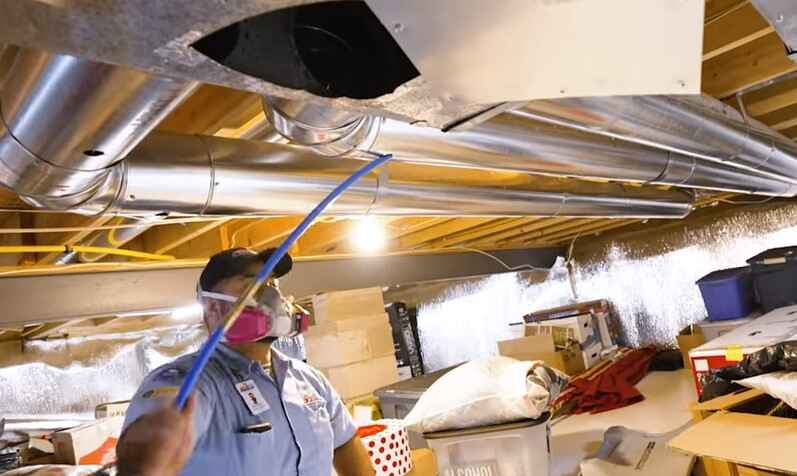
Clean air ducts play a crucial role in maintaining indoor air quality and overall HVAC (Heating, Ventilation, and Air Conditioning) system efficiency. Here are some key reasons highlighting the importance of clean AC ducts:
1. Improved Indoor Air Quality:
Over time, dust, dirt, allergens, and other contaminants can accumulate in air ducts. When the HVAC system operates, these particles can be circulated throughout the indoor space, leading to poor indoor air quality. Regular duct cleaning helps remove these pollutants, promoting cleaner and healthier air.
2. Health Benefits:
Poor indoor air quality can have adverse effects on health, particularly for individuals with respiratory conditions such as asthma or allergies. Clean air ducts contribute to a healthier indoor environment by reducing the presence of airborne irritants.
3. Energy Efficiency:
Accumulated debris in the ducts can obstruct airflow, forcing the HVAC system to work harder to maintain the desired temperature. This increased workload can result in higher energy consumption and utility bills. Clean air ducts facilitate better airflow, allowing the HVAC system to operate more efficiently and potentially saving on energy costs.
4. Extended HVAC System Lifespan:
A clean HVAC system is less likely to experience breakdowns or malfunctions. Regular maintenance, including duct cleaning, can contribute to the longevity of the system by preventing the buildup of debris that may lead to wear and tear on components.
5. Odor Control:
Mold, mildew, and other contaminants in dirty ducts can contribute to unpleasant odors circulating through the ventilation system. Cleaning the ducts helps eliminate these sources of odor, contributing to a fresher indoor environment.
6. Prevention of Mold Growth:
Moisture in the ducts can create an environment conducive to mold growth. Mold spores can be distributed throughout the home via the HVAC system, posing potential health risks. Regular duct cleaning helps mitigate the risk of mold development.
7. Enhanced System Performance:
Clean air ducts contribute to the overall efficiency of the HVAC system. Improved airflow allows for better temperature control, faster heating or cooling, and a more comfortable indoor environment.
8. Compliance with Regulations:
In some cases, regular HVAC maintenance, including duct cleaning, may be required to comply with building codes or regulations. This is particularly relevant in commercial buildings or places where strict indoor air quality standards are enforced.
In summary, maintaining clean air ducts is essential for ensuring good indoor air quality, promoting energy efficiency, and prolonging the life of HVAC systems. Regular inspections and cleaning as part of a comprehensive maintenance plan can provide numerous benefits for both residential and commercial properties.
Impact of dirty ducts on indoor air quality and HVAC system efficiency
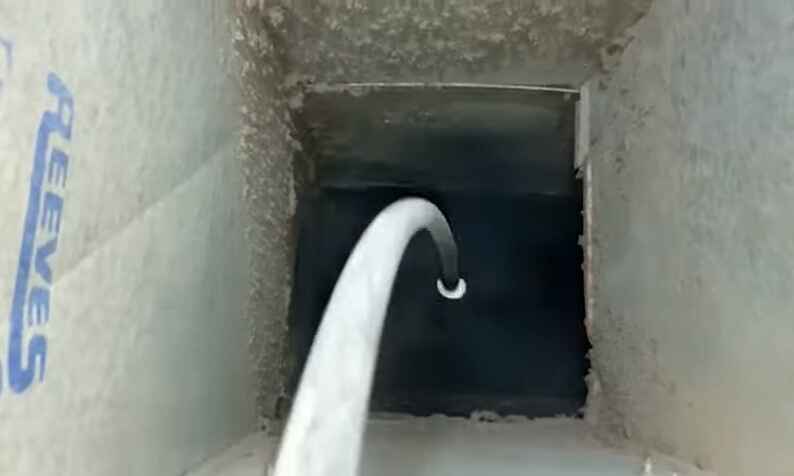
Dirty ducts can have significant impacts on both indoor air quality and HVAC (Heating, Ventilation, and Air Conditioning) system efficiency. Here are some key points to consider:
1. Indoor Air Quality (IAQ):
Airborne Contaminants: Over time, dust, dirt, pet dander, pollen, and other particulate matter can accumulate in the ductwork. When the HVAC system operates, these contaminants can be circulated throughout the indoor space, leading to poor indoor air quality.
Allergens and Irritants: Dirty ducts can contribute to the presence of allergens and irritants in the air, triggering allergies and respiratory issues in occupants.
2. HVAC System Efficiency:
Restricted Airflow: Accumulated debris in ducts can restrict the airflow. This restriction forces the HVAC system to work harder to maintain the desired temperature, leading to increased energy consumption and reduced efficiency.
Increased Energy Costs: As the system works harder to overcome the restricted airflow, energy bills may rise. A clean and well-maintained HVAC system operates more efficiently and can result in lower energy costs.
3. Health Impact:
Mold Growth: If moisture is present in the ducts, it can create an environment conducive to mold growth. Mold spores can then be distributed through the ducts, potentially causing respiratory issues and other health problems.
Bacterial Growth: Dirty ducts may provide a breeding ground for bacteria and other microorganisms. This can contribute to unpleasant odors and pose health risks to occupants.
4. System Longevity:
Wear and Tear: The accumulation of debris in the ducts can lead to increased wear and tear on the HVAC system components. This can result in more frequent breakdowns and a shorter lifespan for the system.
5. Fire Hazard:
Accumulated Debris: In some cases, excessive dust and debris in ducts can become a fire hazard, especially if there are electrical components or heating elements within the ductwork.
To mitigate these issues, regular inspection, cleaning, and maintenance of the HVAC system and ductwork are crucial. Professional duct cleaning services can help remove accumulated contaminants and ensure that the system operates efficiently. Additionally, maintaining a clean and well-ventilated indoor environment can contribute to better indoor air quality.
Signs that Your AC Ducts Need Cleaning
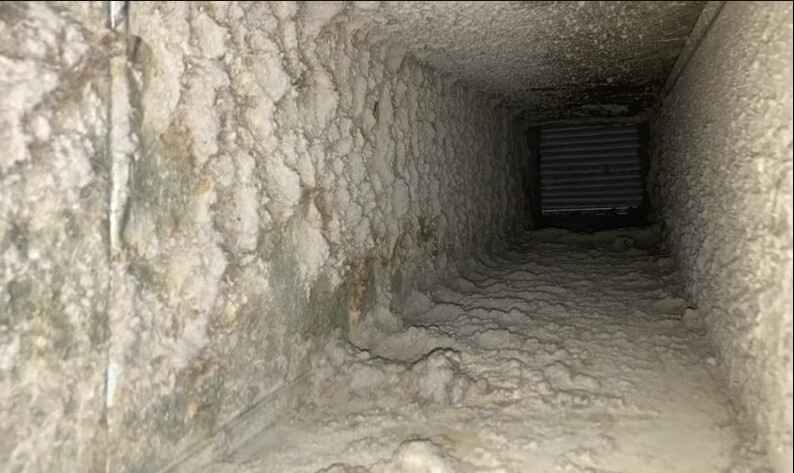
A. Reduced airflow
Reduced airflow from your HVAC system’s vents is a clear indicator that your AC ducts may need cleaning. Over time, dust, debris, and even mold can accumulate within the ducts, restricting the passage of air. This can lead to diminished airflow throughout your home.
Reduced airflow not only hampers the comfort levels in your home but also directly impacts the efficiency of your heating or cooling system. When air struggles to pass through clogged ducts, the system has to work harder to maintain the desired temperature, resulting in decreased overall efficiency and potentially higher energy bills.
B. Uneven temperature distribution
If you notice uneven temperature distribution in different rooms, it could be a sign of blockages or obstructions in your AC ducts. Blockages disrupt the smooth flow of conditioned air, leading to temperature variations throughout the house.
Inconsistencies in temperature not only compromise comfort but also force your HVAC system to compensate for the imbalance. This increased workload can contribute to higher energy consumption and subsequently elevated energy bills.
C. Increase in energy bills
Dirty or clogged ducts force your HVAC system to work harder to maintain the desired temperature, resulting in increased energy consumption. If you observe a sudden spike in your energy bills without a corresponding change in usage patterns, it may be a strong indication that your AC ducts require cleaning.
Regular maintenance, including duct cleaning, is essential to ensure optimal HVAC system performance. By addressing dirty ducts promptly, you not only save on energy costs but also extend the lifespan of your system, reducing the need for frequent repairs and replacements.
D. Presence of mold or unpleasant odors
Accumulated dust and moisture within ducts create an ideal environment for mold growth. If you detect a musty or unpleasant odor when your HVAC system is running, it could indicate the presence of mold in the ductwork.
Mold spores released into the air can pose health risks, especially for individuals with respiratory conditions or allergies. Regular duct cleaning helps eliminate mold and prevents its recurrence, contributing to a healthier indoor environment.
E. Visible dust and debris around vents
If you notice a buildup of dust and debris around your vents, it suggests that these contaminants are being circulated through your ducts. This visible evidence points to potential issues within the ductwork that may require cleaning.
Dirty ducts can contribute to poor indoor air quality as dust and debris are continuously circulated. This can lead to respiratory issues, allergies, and other health concerns. Cleaning the ducts helps improve air quality, creating a healthier living environment for you and your family.
Benefits of Regular AC Duct Cleaning
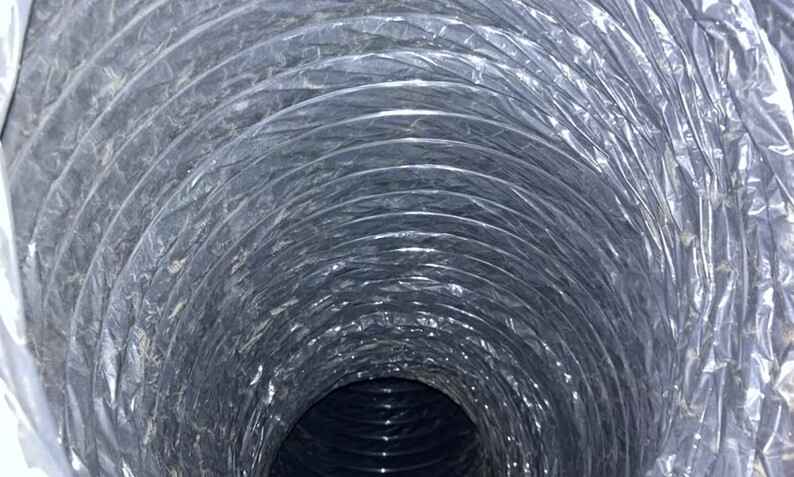
Regular air duct cleaning can offer several benefits for your HVAC (heating, ventilation, and air conditioning) system and overall indoor air quality. Here are some potential advantages:
1. Improved Indoor Air Quality:
Dust, debris, and contaminants can accumulate in the air ducts over time. Regular cleaning helps remove these particles, preventing them from circulating into the indoor air and potentially causing respiratory issues.
2. Enhanced Energy Efficiency:
Clean air ducts facilitate better airflow, allowing the HVAC system to operate more efficiently. When ducts are clogged with dust and debris, the system has to work harder to push air through, leading to increased energy consumption and higher utility bills.
3. Extended HVAC System Lifespan:
A well-maintained HVAC system tends to have a longer lifespan. Regular cleaning can help prevent issues related to dust and debris buildup, reducing the strain on the system and potentially lowering the risk of breakdowns.
4. Reduced Allergens and Irritants:
Cleaning the air ducts can help remove allergens, such as pollen, pet dander, and mold spores. This is particularly important for individuals with allergies or respiratory conditions.
5. Odor Removal:
Unpleasant odors, such as those caused by mold, mildew, or accumulated dust, can be eliminated through air duct cleaning. This contributes to a fresher and more pleasant indoor environment.
6. Prevention of Mold Growth:
Moisture in air ducts can lead to mold growth. Regular cleaning helps to eliminate excess moisture and reduce the risk of mold development, which is important for both indoor air quality and the structural integrity of your home.
7. Improved Airflow:
Clean air ducts allow for better airflow, ensuring that your HVAC system can distribute heated or cooled air more effectively throughout your home.
8. Energy Savings:
By improving the efficiency of your HVAC system, air duct cleaning can contribute to energy savings. A more efficient system requires less energy to operate, leading to lower utility bills.
9. Compliance with Warranty Requirements:
Some HVAC manufacturers recommend or require regular maintenance, including air duct cleaning, to maintain the warranty on their systems. Adhering to these guidelines ensures that you don’t void your warranty.
10. Peace of Mind:
Knowing that your HVAC system is clean and operating efficiently can provide peace of mind. You can feel confident that you are providing a healthy and comfortable indoor environment for yourself and your family.
It’s important to note that the frequency of air duct cleaning may depend on various factors, including the age of your home, your local climate, and whether there are residents with allergies or respiratory conditions. Consult with HVAC professionals to determine the most appropriate cleaning schedule for your specific situation.
DIY vs Professional Duct Cleaning

The decision between DIY (Do It Yourself) and professional duct cleaning depends on various factors, including your knowledge, skills, equipment, and the specific condition of your ductwork. Here are some considerations for both options:
A. DIY Duct Cleaning:
Duct cleaning is an important maintenance task for your HVAC (Heating, Ventilation, and Air Conditioning) system. While professional duct cleaning services are available, some people prefer to do it themselves to save money. Here’s a general guide for a DIY duct cleaning:
Materials Needed:
1. Screwdriver
2. Vacuum cleaner with a hose and brush attachment
3. Soft-bristle brush or duster
4. Microfiber cloths or rags
5. Mask and goggles for protection
6. Replacement air filter (optional)
Steps:
1. Turn Off the HVAC System:
Make sure your HVAC system is turned off before attempting any cleaning. This ensures safety and prevents the system from spreading dust during the process.
2. Remove Vent Covers:
Use a screwdriver to remove the vent covers or grilles from the walls or ceiling. Clean these covers separately with a soft brush or wash them if they are washable.
3. Clean the Duct Surface:
Use a soft-bristle brush or duster to clean the visible parts of the ductwork. Be gentle to avoid damaging the ducts.
4. Vacuum the Ducts:
Attach a hose and brush attachment to your vacuum cleaner. Insert the hose into the ducts as far as you can reach, moving it around to dislodge dust and debris.
If possible, use a vacuum cleaner with a HEPA filter to trap smaller particles.
5. Clean the Ventilation System Components:
Clean other components of the ventilation system, such as the blower, evaporator coil, and housing. Consult your HVAC system’s manual for specific instructions.
6. Replace the Air Filter:
If your HVAC system uses disposable filters, consider replacing them. This helps maintain better air quality in your home.
7. Inspect for Mold and Mildew:
Check for signs of mold or mildew inside the ducts. If you find any, you may need to address the issue with a mold-killing solution.
8. Clean the Surrounding Area:
Vacuum and clean the area around the vents to prevent dust from re-entering the ducts.
9. Reinstall Vent Covers:
Once everything is clean, reinstall the vent covers securely.
10. Turn On the HVAC System:
After completing the cleaning, turn on your HVAC system and check for any unusual odors or sounds. This ensures that the system is functioning properly.
Notes:
Duct cleaning may not be necessary for every home, and it’s generally recommended to consult with HVAC professionals if you have concerns.
If you have a serious mold or pest infestation in your ducts, it’s best to hire professionals to address these issues.
Keep in mind that while some homeowners choose to do DIY duct cleaning, others prefer hiring professionals for a more thorough and comprehensive cleaning. If you’re unsure or have specific concerns, it’s advisable to consult with HVAC experts.
Tips for Homeowners:
DIY duct cleaning involves homeowners taking on the task of cleaning their HVAC (Heating, Ventilation, and Air Conditioning) system ducts without professional assistance. While it can be a cost-effective option, it requires careful consideration and adherence to specific guidelines. Some tips for homeowners attempting DIY duct cleaning include:
Gather the Right Tools: DIY duct cleaning often involves using household tools such as vacuum cleaners, brushes, and disinfectants. Ensure these tools are appropriate for your duct system.
Inspect Ducts for Damage: Before cleaning, inspect the ducts for any visible signs of damage. If there are leaks or significant issues, it’s advisable to consult a professional.
Seal Off Registers: Close off and seal registers to prevent dust and debris from entering other parts of the house during the cleaning process.
Limitations and Potential Risks:
DIY duct cleaning has its limitations and potential risks, including:
Incomplete Cleaning: Household tools may not reach all areas of the duct system, leading to incomplete cleaning. Accumulated debris in hard-to-reach places can persist.
Risk of Damage: Without proper knowledge, there’s a risk of damaging ducts, especially if aggressive cleaning methods are employed. Damaged ducts can compromise the efficiency of the HVAC system.
Health Concerns: Stirring up dust during the cleaning process may pose health risks, especially for individuals with respiratory issues. DIY cleaning might not effectively eliminate all contaminants.
B. Professional Duct Cleaning Service:
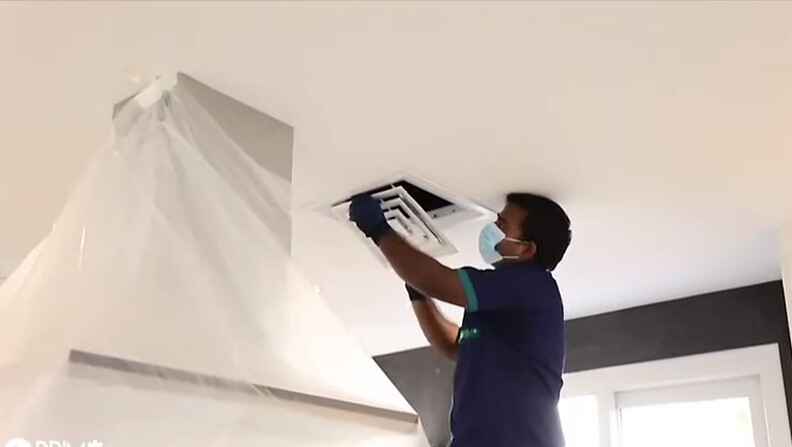
Professional duct cleaning refers to the process of cleaning the heating, ventilation, and air conditioning (HVAC) systems in residential and commercial buildings. This includes the cleaning of air ducts, vents, registers, and other components that make up the HVAC system. The goal of professional duct cleaning is to remove accumulated dust, debris, mold, and other contaminants from the system, improving indoor air quality and the overall efficiency of the HVAC system.
Here are some key aspects of professional duct cleaning:
1. Inspection:
A thorough inspection of the HVAC system is typically conducted before the cleaning process begins. This helps identify areas that may need special attention and allows the cleaning professionals to assess the overall condition of the system.
2. Cleaning Process:
The actual cleaning process involves using specialized equipment such as high-powered vacuums, brushes, and blowers to dislodge and remove debris from the ductwork. Some systems may also use agitation devices to ensure a comprehensive cleaning.
3. Cleaning Components:
In addition to cleaning the ducts, other components of the HVAC system, such as the coils, fans, and housing, may also be cleaned. This helps ensure that the entire system is free from contaminants.
4. Disinfection and Sanitization:
After cleaning, some professionals may apply disinfectants or sanitizers to the ductwork to kill any remaining bacteria, mold, or other microorganisms. This step is particularly important if mold growth is detected.
5. Sealing and Insulation:
In some cases, duct cleaning services may include the inspection and repair of leaks in the ductwork. Proper sealing and insulation help prevent the entry of contaminants into the system and improve energy efficiency.
6. Benefits:
Professional duct cleaning can provide several benefits, including improved indoor air quality, reduced allergens and irritants, increased energy efficiency, and extended lifespan of the HVAC system.
Expertise and Specialized Equipment:
Hiring a professional duct cleaning service comes with several benefits, starting with their expertise and specialized equipment. Professionals are trained to handle various HVAC systems and employ specialized tools like high-powered vacuums, rotary brushes, and air whips. This ensures a more thorough cleaning, reaching areas that DIY methods may miss.
Ensuring a Thorough and Effective Cleaning Process:
Professional duct cleaning services follow industry standards and guidelines to ensure a thorough and effective cleaning process. They are equipped to:
Remove Accumulated Debris: Professionals can effectively remove accumulated dust, debris, and contaminants from the entire duct system, improving indoor air quality.
Inspect and Identify Issues: Professionals can identify potential issues such as leaks, mold growth, or pest infestations during the cleaning process. Early detection allows for prompt repairs.
Enhance Energy Efficiency: A clean duct system contributes to better airflow and energy efficiency, reducing the workload on HVAC systems and potentially lowering energy bills.
It’s important to note that not all HVAC systems necessarily require professional duct cleaning. The need for cleaning depends on factors such as the age of the system, the presence of contaminants, and the overall indoor air quality. If you’re considering duct cleaning, it’s advisable to consult with a qualified HVAC professional to determine whether it’s necessary for your specific situation.
How Often Should AC Ducts Be Cleaned?

A. General recommendations from HVAC experts:
1. Frequency: HVAC (Heating, Ventilation, and Air Conditioning) experts generally recommend having your AC ducts cleaned every 3 to 5 years. However, this can vary depending on specific circumstances and factors.
2. Inspection: Regular inspection of the ductwork is crucial. If there are visible signs of mold growth, excessive dust, or debris, it may be necessary to clean the ducts more frequently.
3. Occupant Health: For individuals with allergies or respiratory issues, more frequent cleaning might be advisable to maintain good indoor air quality and reduce the risk of health problems.
4. Renovation or Construction: If you’ve recently undergone construction or renovation work in your home, it’s recommended to clean the ducts afterward, as the dust and debris generated during these processes can accumulate in the ductwork.
5. Pest Infestation: If there’s evidence of pest infestation in the ducts, such as droppings or nesting materials, immediate cleaning may be necessary to prevent health risks and improve air quality.
B. Factors influencing the frequency of duct cleaning:
1. Geographical Location: Homes in areas with high humidity levels or high pollen counts may require more frequent duct cleaning to prevent the buildup of mold, allergens, and pollutants.
2. Usage Patterns: Homes with heavy AC usage, especially in seasons with extreme temperatures, may accumulate more dust and debris in the ducts, necessitating more frequent cleaning.
3. Pets: Homes with pets tend to have more pet dander and hair circulating in the air. If you have pets, consider more frequent duct cleaning to maintain indoor air quality and reduce allergens.
4. Smoking: If smoking occurs indoors, the ducts may accumulate nicotine and other contaminants, warranting more frequent cleaning.
5. Duct Material: The type of duct material can influence how much debris and dust accumulate. Flexible ducts, for example, may be more prone to collecting dust than metal ducts.
6. System Efficiency: Regular maintenance and cleaning contribute to the overall efficiency of the HVAC system. Clean ducts allow the system to operate more effectively, potentially reducing energy consumption and extending the life of the equipment.
It’s important to note that while these general recommendations and factors can guide you, individual circumstances may vary. If you have specific concerns or notice a decline in indoor air quality, it’s advisable to consult with HVAC professionals for personalized advice and inspection.
Conclusion
In conclusion, ensuring the cleanliness of your AC ducts is vital for maintaining a healthy indoor environment. By paying attention to subtle signs such as reduced airflow, strange odors, or increased energy bills, you can determine whether your AC ducts need cleaning. Regular inspection and timely cleaning not only improve air quality but also enhance the efficiency of your HVAC system. Prioritize the well-being of your home and occupants by staying vigilant to these indicators, promoting a comfortable and breathable living space. Schedule professional duct cleaning when needed, and breathe easy knowing your indoor air is fresh and pure.
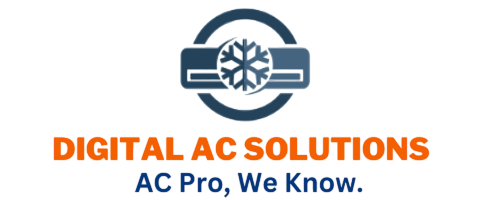


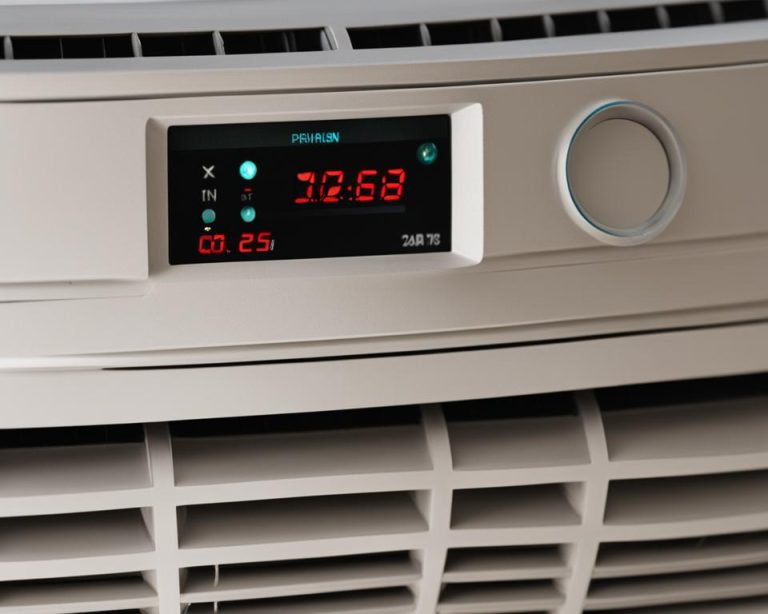
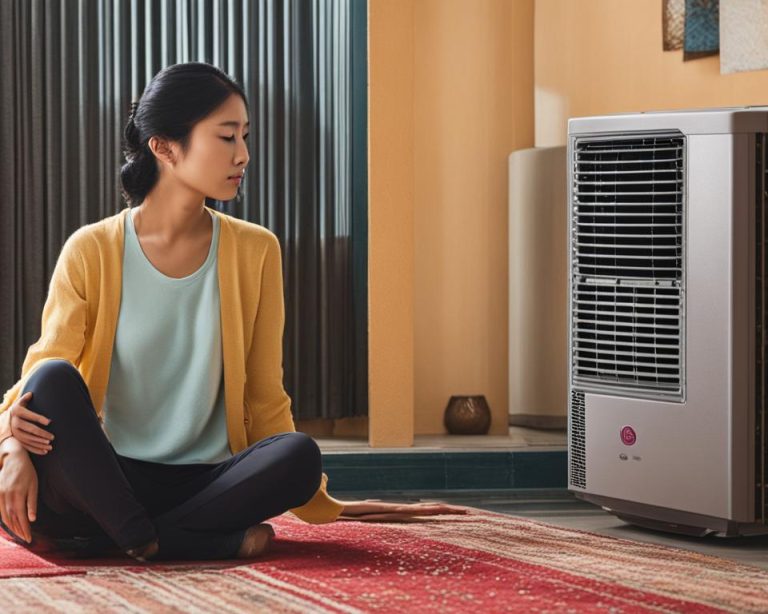

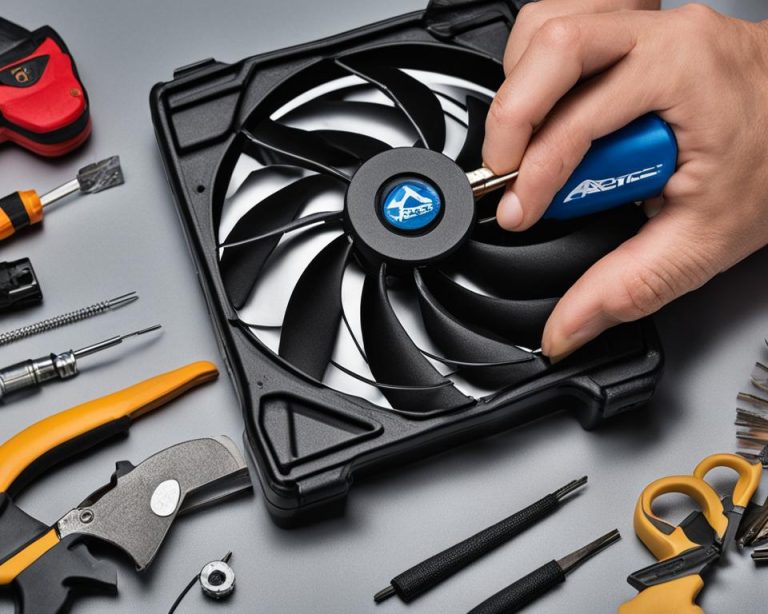
12 Comments